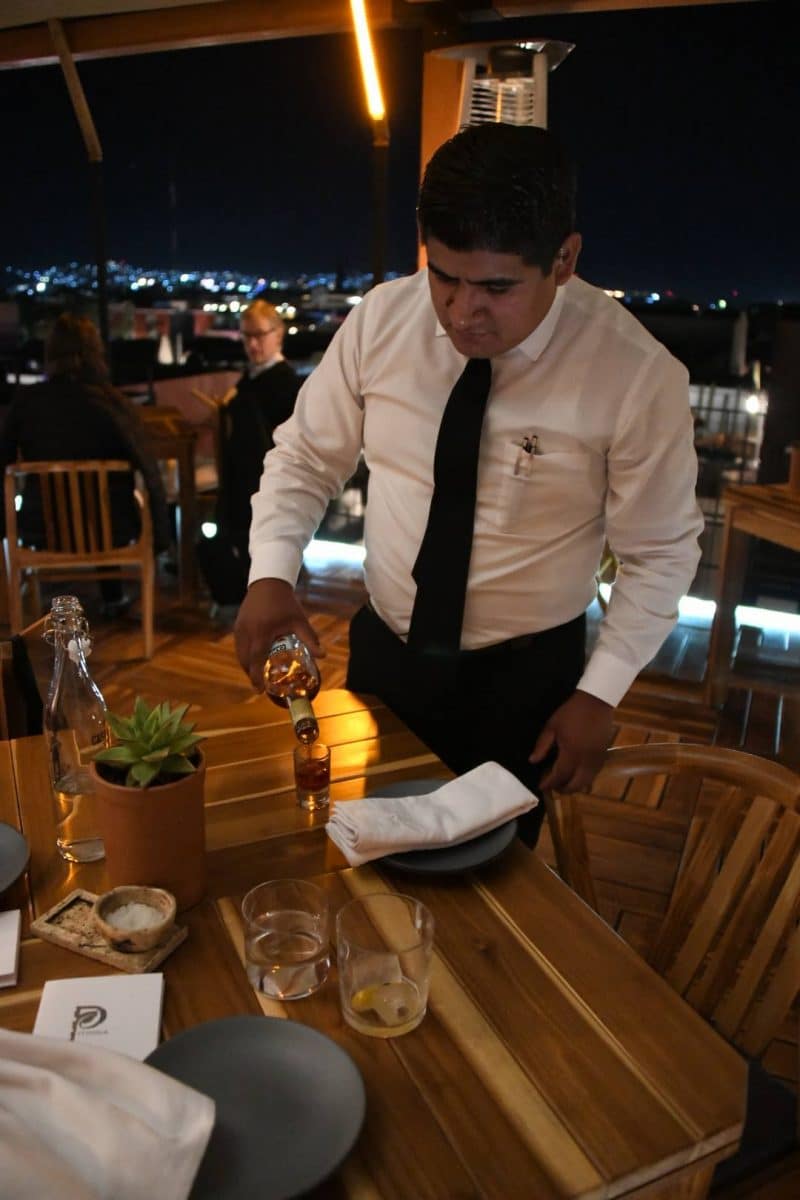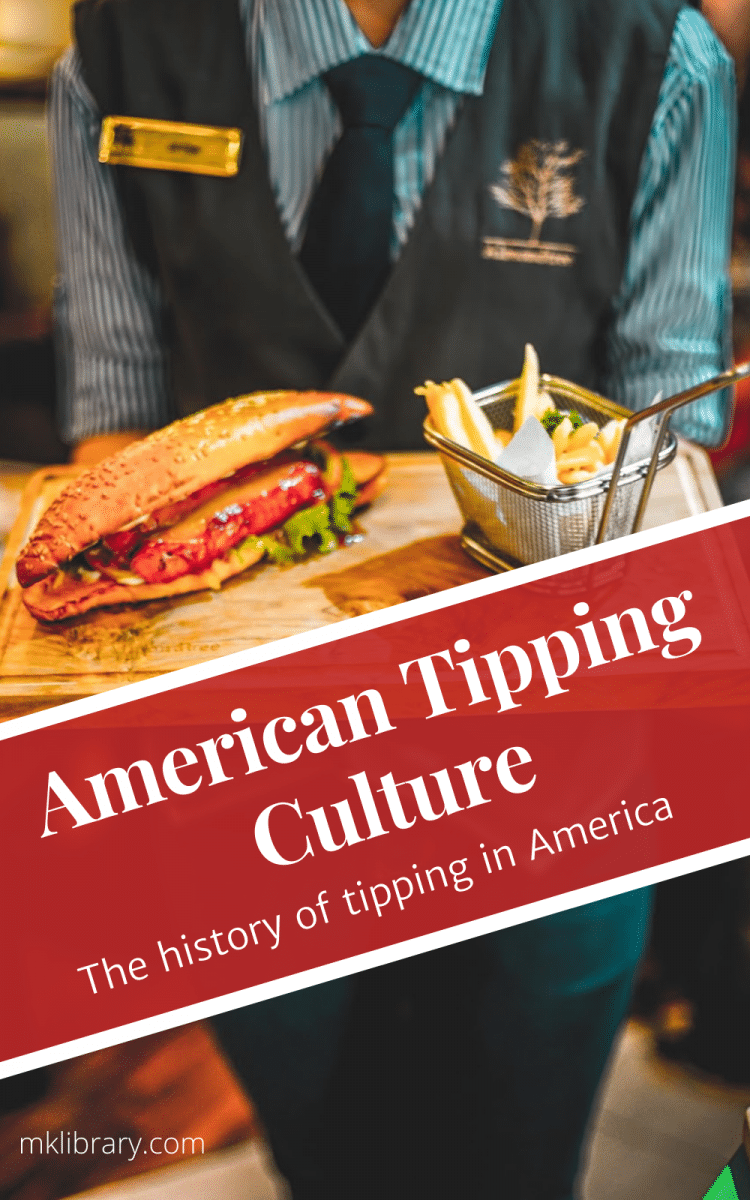The tipping culture we experience today wasn’t always the way it was throughout the United States. The cultures of tipping in Europe and the United States were polar opposites at one time. Somewhere along the way in the 1800s, the culture of tipping for service fell out of favor in Europe and rose to a prolific and expected tradition throughout the states.

Table of Contents
European Origins
Origins of tipping began in England. Originally referred to as the “vail,” a practice in the Early Modern period, from the 1500s to 1800s. Guests in well-to-do houses would provide a small gratuity to the service staff upon their departure as a thanks for the services rendered.
Coveted service positions could see the gratuity far exceed wages. This practice lasted for centuries until it was abolished in the mid-1800s, and eventually found its way into the service industry as a whole there, where it outlasted the ban in houses.
On the European continent, tipping was common and expected throughout the 1800s, although not necessarily the same origins. In France, some servers would work for no wages at all in the 19th century, making a living only their tips and gratuity, while in other establishments a ‘token’ system was used, described by Eeckhout:
Each morning the waiter had to buy a certain number of tokens, which he would then return successively over the day according to the number of drinks sold, but 5 to 10 percent of what he paid was withheld by the owner in order to finance les frais, or general expenses. The waiter’s contribution had to be paid regardless of the actual tips he received. A customer who did not tip therefore cost the waiter money.1
Coming to America
American travelers to Europe complained about having to tip in the 1800s throughout many written journals and letters. The emergence of tipping in the American hospitality industry happened when hotel accommodations switched to what was called the “European Plan”, from the “American Plan.”
The American Plan meant staying at a hotel included food in the room price, while the European Plan indicated food was not included.
At this point in history, the American hospitality industry was tiny. Tipping hadn’t been an issue as of yet. Establishments were almost all quite tiny, with service provided by the owner and his family. Tipping them would have been interpreted as an insult.
The issue of tipping arose in the latter half of the 1800s, as the American hotel industry expanded. Service was much more likely to be provided by employees who were not family. Under the American Plan, owners and managers of hotels did not look kindly upon tips.
Rather than being seen as a gratuity for the quality of service provided, customers offering gratuity were seen as suspicious guests using tips as a small bribe for the service staff, who would in return provide them extra food beyond the regulated amount under their room and board cost.

The Influence of Slavery
Anti-tipping rhetoric often made use of ideas of slavery. The Washington Post published an article in 2016 (currently unavailable), titled “I Dare You to Read This and Still Feel OK About Tipping in the United States” by Roberto A. Ferdman4.
To say tipping is a direct product of slavery is perhaps pushing things a bit too far. Tipping was seen as undemocratic. To tip someone providing a service could be interpreted as creating a power imbalance, no longer considering your server as an equal.
1916 anti-tipping activist William Scott goes over the top to decry, “In the American democracy to be servile is incompatible with citizenship. Every tip given in the United States is a blow at our experiment in democracy,” and further that “the relation of a man giving a tip and a man accepting it is as undemocratic as the relation of master and slave.”
As for actual (former) slaves, and African-Americans generally, it doesn’t need to be said that even with the end of slavery, in much of the country, and for much of the population, black people were looked down upon as second class citizens.
Segrave makes brief mention of the Pullman company to illustrate the racial angle. Pullman had the largest black workforce of any private company in America from the late 19th to early 20th century. By 1930, there were nearly 12,000 black people (almost all men) on the company payroll.
Pullman had aggressively moved towards encouraging tips to its porters, being one of the realms within the American hospitality industry most favorable to the rise of tipping. They made no secret that they were paying the porters a low wage on the very expectation that tips would supplement their income.
This was not popular with many of the workers, or activists for equality. Arnesen5 provides several choice quotations from the early 20th century on the matter, one opponent stating,
“From every angle the tipping system is unjust. It is unjust to the Negro because in accepting tips he feels himself less a free man, and because necessity forces him to perpetuate the system”.5
A 1917 newspaper editorial degraded the porter into a “beggar, a soft-soaping, coin-coaxing creature, instead of an upright, honorable, manly man, who is paid an honest wage for an honest service.”
It can’t be said every porter was against the system. A well-tipped worker could make a very comfortable living given the expectations of the time for a black man. Attacking the tipping system was nevertheless one of the first priorities of the newly formed Brotherhood of Sleeping Car Porters, when porters Unionized in 1925. Under the slogan, “Not servitude, but service”, the union requested their wages be more than doubled from an entry level of $67.50 to $155, while tipping be prohibited in Pullman cars.
The union’s movement was unsuccessful. Tipping remained, and wages did not double. The white men in charge insisted there was nothing demeaning in forcing the black men to depend on handouts from whites, and if anything, that the Pullman Company was doing a great service by even employing the black men at all.
Robert Todd Lincoln, Chairman of the Board (and son of the former President), noted at the time,
“The colored race, as we know, were subject to great limitations in the past to obtain employment in this country [but] outside of what you might call the learned professions […] the one large element which has done more to uplift them is the service in the Pullman Co.” A threatened strike in 1928 never materialized as Pullman began the preparations to bring in scabs and strikebreakers, and the Union backed down.
In the United States, the rhetoric of tipping, generally, and anti-tipping rhetoric from those in service, especially, hedged heavily on the disparity of station that tipping made evident. And the volatile nature of race relations in the period from the end of the Civil War through the 1920s, when the tip was establishing itself in America, absolutely intertwines with that, but it is only part of the larger picture of the growing hospitality industry and changing ways of doing business, so shouldn’t really be seen as the driving force.
The main focus by most pieces which discuss tipping from a racial angle, which seems popular for anti-tipping activists, seem at best to mostly draw from either implicitly or explicitly the Pullman Porter’s experience. While it is a highly illustrative one, but it is only a part of the story.
The Tipping Point

The period from roughly 1900 until 1920, as the shift to tipping was occurring, was the most contentious. The shift to the European Plan hadn’t intended to bring tipping into practice. For management, but especially customers, it was met with reactions ranging from awkward acceptance to outright hostility.
To put this into perspective, imagine some of the establishments you have frequented in the past year which have had a jar for tips, or perhaps a retail store asking for donations upon checkout. Think of the places where you have felt slightly uncomfortable with this confrontation of sorts. Now, try and imagine this as being an entirely new and foreign practice. I can only imagine the awkward interactions which happened at the turn of the century.
In anti-tipping hotels, the “Servidor,” was a small compartment with a door on the inside and outside of a room. This was an innovation to prevent the guests from even coming face to face with service staff. Rather than provide table service, and see guests faced with the dilemma of whether or not a tip was acceptable or expected, some hotels replaced restaurants with cafeterias.
The dilemma of the tip was such a pressing matter, that several states went so far as to pass laws banning the practice in that period. Enforcement was not very effective. The laws were short-lived, and all but eliminated by the mid-1920s. Liked or not, tipping had become firmly established and the accepted norm.
Trade publications which had been hostile to the practice of tipping up until the beginning of the decade began to at least accept it was here to stay. Mentzer2 highlights this passage from a 1921 issue of Hotel Monthly:
When it gets so that a man pays money to another man in order to retain his own self-respect, which he forfeits if he doesn’t, it certainly may be said that tipping has entered the national consciousness2
At this point in time, it was only the very high end establishments which really tried to resist allowing tips. Segrave3 notes the Grace Dodge Hotel in DC, which opened in 1921, explicitly as a no-tip hotel, and was actually quite successful at attracting clients who wished to avoid gratuities.
The Longchamps restaurant was founded in 1918 to be a tip free joint, expanding to nine establishments. But these were the exception, and most establishments balked at the higher wages necessary for the approach. As for Longchamps, they more than fudged the whole thing, simply having a ten percent service charge on the bill. This most likely kept the patron from having to tip in person and kept it formalized on the bill. Some other no-tip establishments also tried the service charge route, but it was generally not seen as successful in the US.
The Prohibition Era

Slowly and in conjunction with the expansion of the industry as a whole, the transition to the European Plan occurred in the American hospitality industry. The transition happened very slowly, this was by no means an overnight change. Much debate within the industry over the relative merits of the approaches went round and round, in near endless debates, but the European Plan eventually won.
The Prohibition Era from the 1920s to 1933 was an indirect factor in the final nail in the coffin to the American Plan throughout the hospitality industry. The laws of Prohibition significantly cut into the profits for hotels, as alcohol had been an extra charge.
It wasn’t until the 1930s that the first Federal minimum wage law came into place. While this played into developments of tipping norms through the 20th century, it wasn’t relevant to this period of time.
Tightening budgets pushed the remaining holdouts into the European Plan to improve their finances. As the shift of hospitality culture occurred, tipping was no longer quite the nefarious method in which the guest would undermine the hotel.
Although it wasn’t immediately embraced by all hoteliers, most eventually came around to the advantages of allowing tips, which could help cut down on payroll costs and pass it off to the customers to provide. Only in the exclusive high-end hotels and establishments did the American Plan remain standard, with tipping firmly dissuaded, at least until the post-WWII era.
The Modern Era of Tipping
With the current state of costs of living and a minimum wage which has not kept up, restaurants have begun to turn back to the American Plan. Menus may either require a percentage of gratuity built into the check or simply eliminate tipping altogether, making up for it with increased menu prices.
Some restaurants have gone so far as to make sure the kitchen is named to be included as recipients of tips.
Tipping amounts have slowly crept up from 10% to 15-20% being seeing as an acceptable amount, based on the cost of living.
Back in the Europe, tipping hasn’t quite ended, but has become a much less expected practice. It is not expected to walk into any restaurant and tip 20% on top of any price from the start. A major factor in this cultural difference is the shift to a proper wage.
In America, unions didn’t want to remove the tipping system, but use it as a supplement to a reasonable wage. In Europe, employers wanted to eliminate tipping, and instead provide what is considered a proper living wage along with benefits, stability, and more hours than what service industry employees might find acceptable in the United States.
Sources
/u/Georgy_K_Zhukov, February 10, 2018.
1 Eeckhout, Patricia Van den. 2015. “Waiters, Waitresses, and Their Tips in Western Europe Before World War I”. International Review of Social History 60, (3) (12): 349-378.
2 Mentzer, Marc S. 2013. The payment of gratuities by customers in the united states: An historical analysis. International Journal of Management 30, (3) (09): 108-120.
3 Segrave, Kerry. Tipping: An American Social History of Gratuities. McFarland, 1998.
4 FerdmanI, Roberto A. February 18, 2016. I dare you to read this and still feel good about tipping, The Washington Post.
Ayres, Ian, Fredrick E. Vars, and Nasser Zakariya. “To Insure Prejudice: Racial Disparities in Taxicab Tipping.” The Yale Law Journal 114, no. 7 (2005): 1613-674.
5 Brotherhoods of Color: Black Railroad Workers and the Struggle for Equality by Eric Arnesen
Pullman Porters and the Rise of Protest Politics in Black America, 1925-1945 by Beth Tompkins Bates

- About the Author
- Latest Posts
I strive to paint vivid landscapes with my words, bringing the magic of far-off lands and enchanting aromas to life for my readers. Combine passion for exploration and the art of gastronomy in an unending ode to the senses. When I’m not traversing the globe, I find solace in the earth beneath my fingertips, tending to my garden and working on projects around my verdant oasis. MK Library serves as a beacon, guiding fellow travelers and homebodies alike to embrace sustainability, nurturing both our planet and our souls with purpose. Full Bio.


